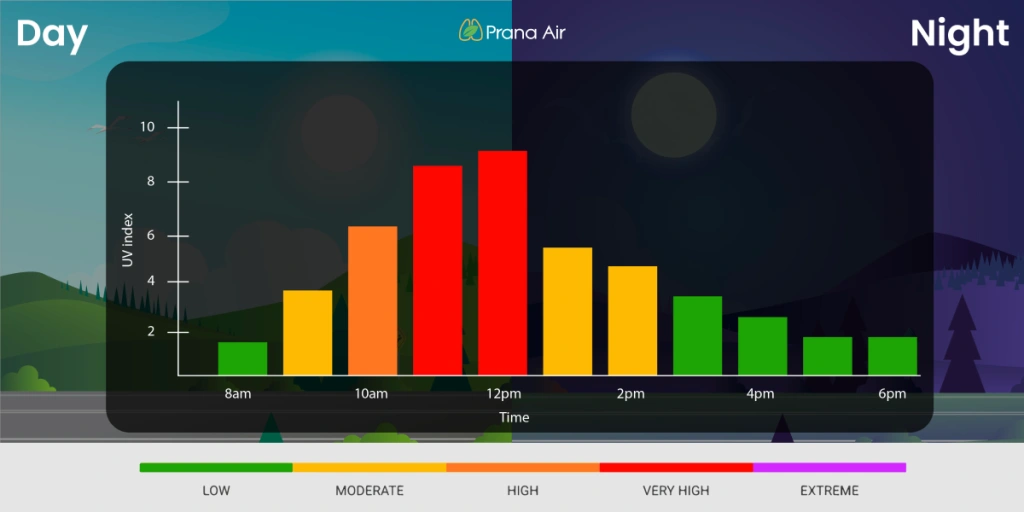What is ultraviolet (UV) radiation?
Ultraviolet (UV) light emits from the sun into the atmosphere. Since, UV rays are present in the sunlight and emit electromagnetic radiation from the sun. For the most part, it is invisible to the naked eye. However, Some insects like bumblebees can see the UV rays. With it, UV radiation is a form of energy. It is measured on a scientific scale known as the electromagnetic (EM) spectrum.
Moreover, UV rays are divided into three sub parts UV-A, UV-B, and UV-C. These UV rays are absorbed in the atmosphere or absorbed by the Ozone. UV-C rays are the most harmful. With it, UV-B rays cause sunburn to the human. And UV-A rays affect the DNA in the living organisms. These rays have shorter wavelengths than visible light and longer than X-rays.
UV rays existence discovered by Johann Ritter in 1801. It also has some health benefits. As it helps in Vitamin D creation in the human body. But exposure also leads to some risks. Because, UV rays can cause sunburn, premature aging, skin cancer, etc. It can be controlled by protecting yourself from UV radiation exposure.
What are the UV radiation sources?
The main source of Ultraviolet radiation (UV) is the sun. It is a natural source. Besides, UV rays also emits from other artificial sources as well. As it releases from Tanning beds, Some lasers type, mercury vapor lighting, halogen, fluorescent and incandescent lights.
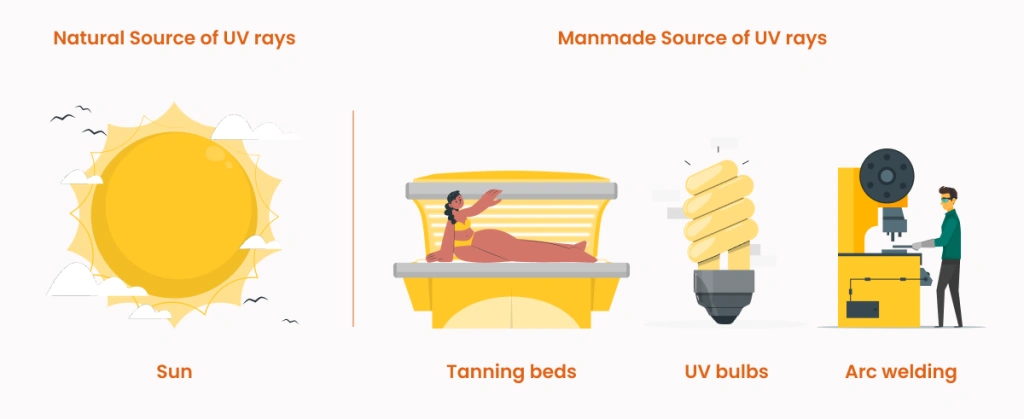
Natural sources of UV rays:
Sun
Manmade sources of UV rays:
Tanning beds, UV bulbs, arc welding, mercury vapor lamps, and other artificial sources
What are the Ultraviolet radiation (UV) types?
UV radiations are classified into three primary groups UVA, UVB, and UVC. It is categorized as per their wavelength. For it, UV rays measured in nanometers. Some absorption levels are set that are absorbed by the ozone layer in the earth’s atmosphere.
Types of UV radiation: UVA, UVB, UVC
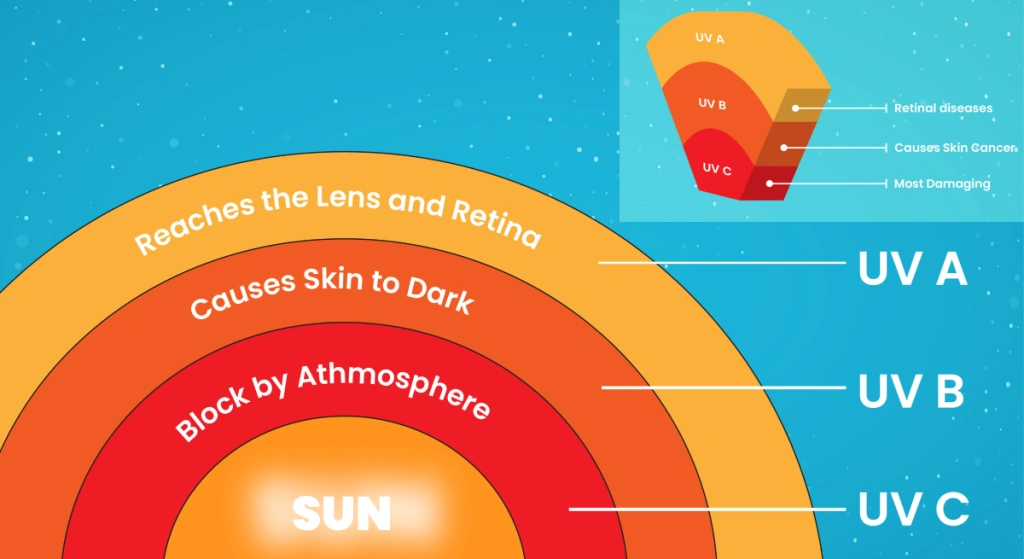
1. UVA:
Ultraviolet A rays are long UV waves. It is also known as soft UV rays. And it is not absorbed by the ozone layer. The wavelength of UV-A is between 315-400 nm.
2. UVB:
Ultraviolet B rays are a medium wave. The Ozone layer mostly absorbed the UV-B rays. Because its wavelength is 280-315 nm.
3. UVC:
Ultraviolet C rays are the shorter waves emitted by the sun. The ozone layer and atmosphere completely absorb the rays. The wavelength of the rays is 100-280 nm.
What are the Benefits of UV Radiation?
UV radiation has some benefits for the human body. Since, it provides warmth and enhances the mood of an individual. Hence, some amount of UV radiation is healthy for human beings. However high exposure to the UV rays includes risks.
Here are the UV ray exposure benefits for human health:
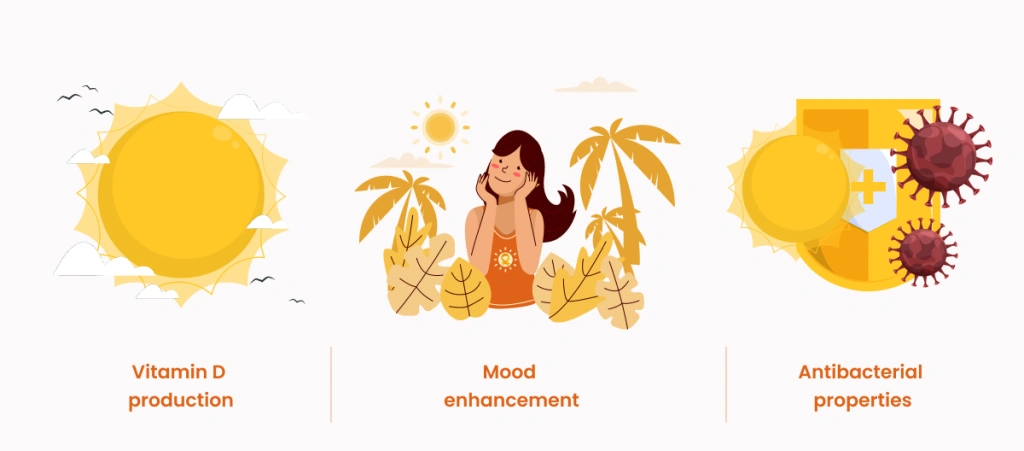
- Vitamin D production: UV rays play a crucial role in Vitamin D production in the human body. Since, Vitamin D is necessary for bone health. It also helps in the immune function of any human being.
- Mood enhancement: It is noticed that good sunlight can improve the mood of an individual. Sunlight exposure can help in improving mood. It can also reduce depression.
- Antibacterial properties: UV rays can also help in killing the bacteria on any surface or the skin.
What are the Risks of UV Radiation?
As per data by WHO, over 1.5 million skin cancer cases were diagnosed in 2020. With it, 15 million people are blind because of cataracts. As per the report, 10% are cases of UV rays exposure. UV radiation has detrimental impacts on the human health. Know about the after-effects of UV ray exposure:
Sunburn:
UV rays exposure can burn and cause sunburn to the human body. Hence, it can cause short-term skin damage. The skin damage includes peeling, redness, and pain.
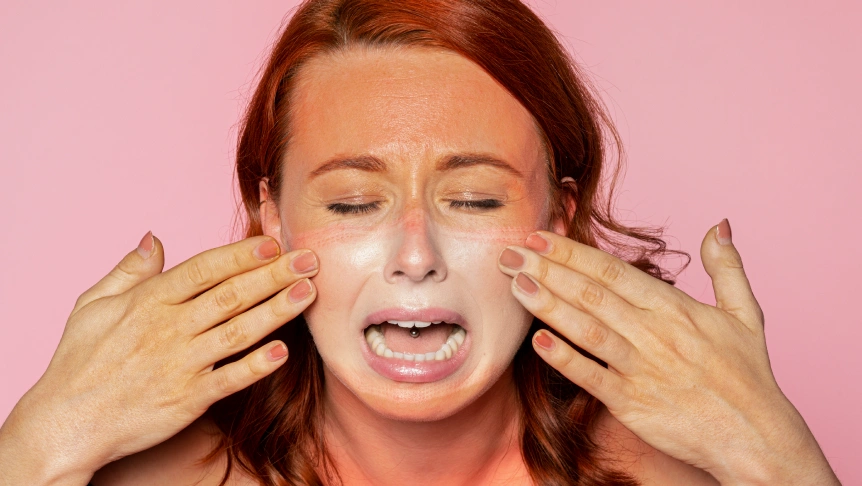
Skin cancer:
Excessive or prolonged UV exposure can have a severe impact on the health. As it can increase the skin cancer chances. Since, various skin cancers can happen due to UV rays exposure. Such as UV rays can increase the risk of melanoma, basal cell carcinoma, and others.
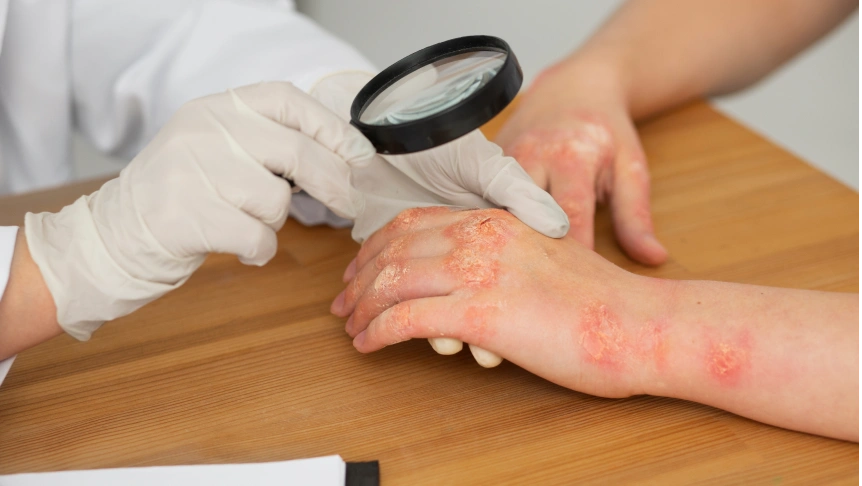
Eye damage:
Direct exposure to UV rays in the eyes can cause eye problems. As it can cause cataracts, macular degeneration, and other eye problems.
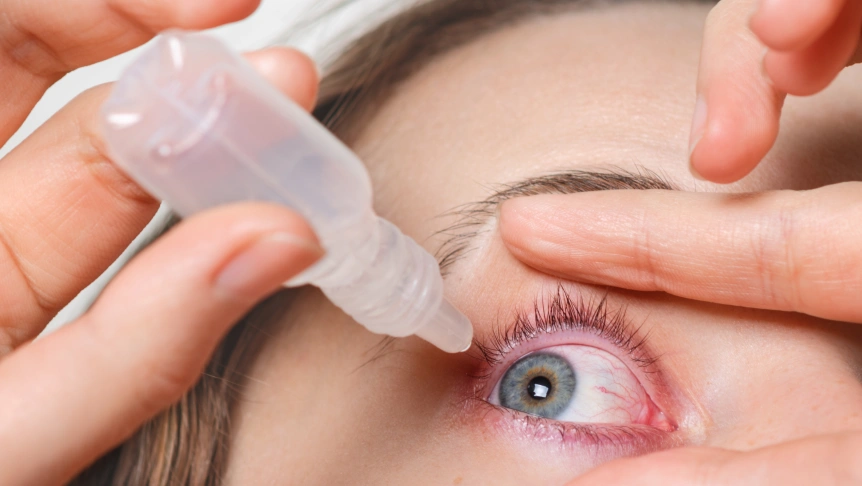
Premature aging:
UV ray exposure highly impacts the human skin. As it can damage the skin cells. Hence, the individual can face wrinkles, fine lines, and age spots.
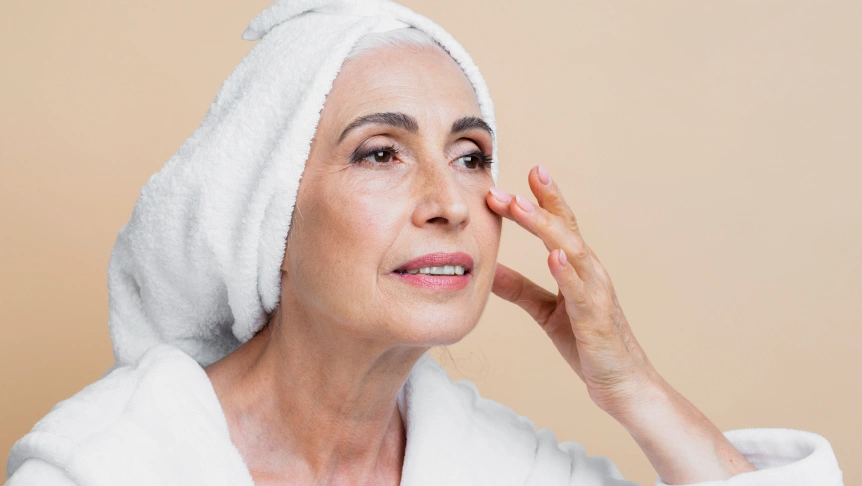
UV rays’ effects on ecosystems:
UV rays can cause changes in atmospheric conditions. As it can affect by changes in global climate. The photosynthesis rate can be reduced due to the UV rays exposure.
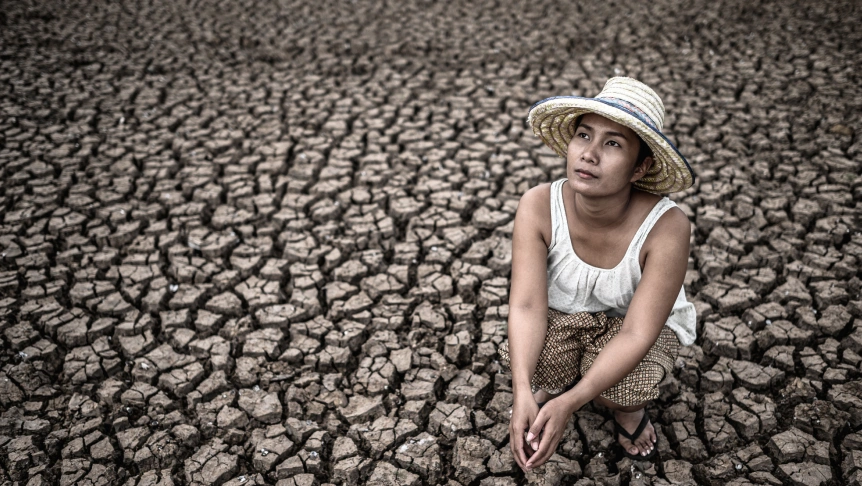
How you can protect yourself from UV Radiation?
Protecting yourself from prolonged exposure to Ultraviolet radiation (UV) is necessary. The outside workers have a higher risk of UV rays exposure. Hence, they require better precautions to save themselves from exposure. Here are some options to protect yourself from the UV radiation emits:
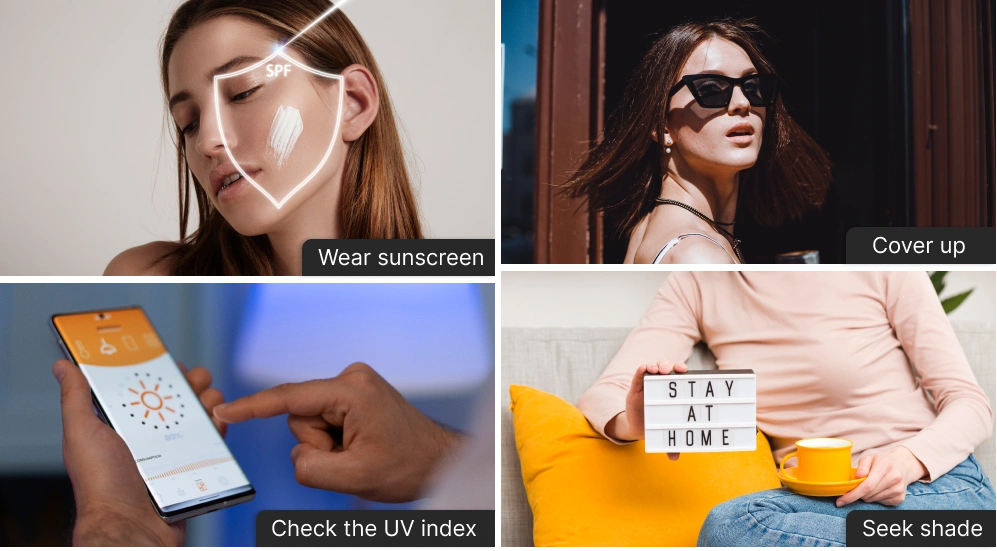
1. Seek shade:
UV radiation is at its peak during the daytime. As sun can emit excessive UV rays. It is between 10 am to 4 pm. Protect yourself by seeking shade in the meantime and avoid prolonged exposure to the sun.
2. Sunscreen:
Many advanced protection sunscreens are available to protect yourself. Thus, look for broad-spectrum protection with SPF 30 or higher for better coverage and protection.
3. Cover up:
You can cover yourself up with clothes to control the sun exposure to the body directly. For it, Wear hats, sunglasses, or clothing to cover your skin.
4. Avoid tanning beds and bulbs:
These artificial sources of UV radiation are just as harmful as the sun. High exposure to UV radiation through tanning beds or UV bulbs can be detrimental.
5. Check the UV index:
Make outdoor decisions by checking the UV index before stepping out. Since, it measures the UV intensity and helps in planning outdoor activities and saving yourself from UV rays.
What are the factors affecting UV rays levels?
UV ray emission from the sun depends on various factors. Thus, know about the factors that can affect the UV rays exposure in the earth’s atmosphere by the sun. Through it, you can also make the right decision to protect yourself from UV rays exposure.
Here are the factors affecting UV radiation levels:
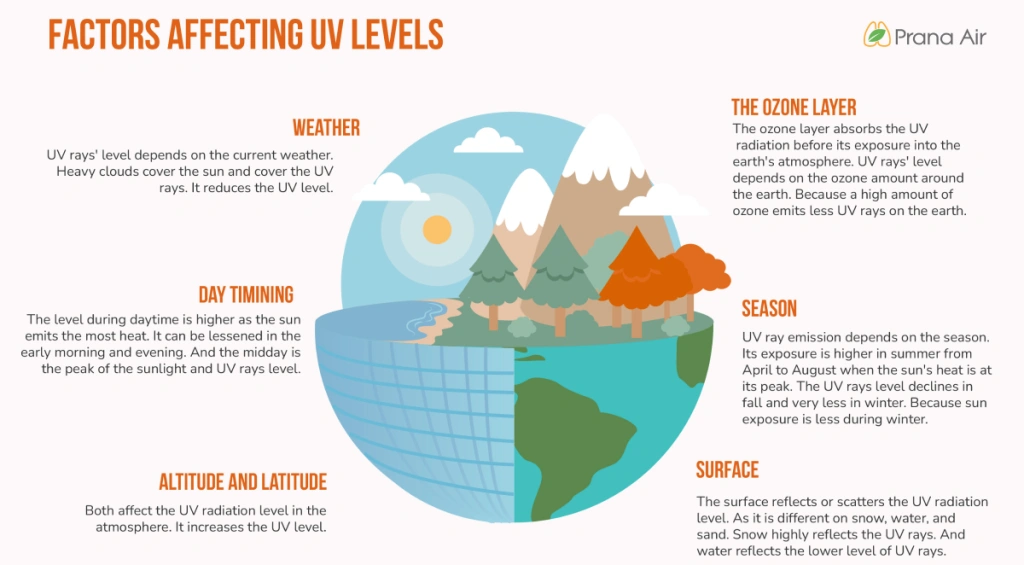
Season:
UV ray emission depends on the season. Its exposure is higher in summer from April to August when the sun’s heat is at its peak. With it, the UV rays level declines in fall and very less in winter. Because sun exposure is less during winter.
Day timing:
The level during daytime is higher as the sun emits the most heat. Besides, it can be lessened in the early morning and evening. And the midday is the peak of the sunlight and UV rays level.
The Ozone layer:
The ozone layer absorbs the UV radiation before its exposure into the earth’s atmosphere. UV rays’ level depends on the ozone amount around the earth. Because a high amount of ozone emits less UV rays on the earth.
Weather:
UV rays’ level depends on the current weather. As, heavy clouds cover the sun and cover the UV rays. It reduces the UV level.
Surface:
The surface reflects or scatters the UV radiation level. As it is different on snow, water, and sand. Snow highly reflects the UV rays. And water reflects the lower level of UV rays.
Altitude and Latitude:
Both affects the Ultraviolet radiation level in the atmosphere. It increases the UV level.
How UV rays are measured?
Ultraviolet radiation measuring is necessary to control the exposure and after effects on the health. For it, the weather station or Ambient Air monitor can be used to know the Ultraviolet radiation level. UVI (Ultraviolet Index) is the unit to measure UV radiation. It is crucial to measure the UV rays to control the skin cancer risk.
The weather station or any device has a UV rays sensor. Its measurement starts by calculating all weather forecast parameters. The unit to measure the UV radiation is units of milliwatts per square meter.
What is the UV index?
Ultraviolet Index can help you in deciding to save yourself from UV rays exposure. Through it, an individual can adjust their plans and decide on the clothes to cover their bodies. You can check the UVI level today. With it, the UVI level depends on the daytime. As noon or midday has high exposure to UV radiation.
The UVI is calculated by focusing on some factors such as:
- Ozone layer thickness over the particular location. Because more thickness absorbs UV rays.
- The weather and clouds were also checked during UVI calculation. Since clouds can cover the and block the UV radiation.
- It depends on the city elevation as higher elevation reflects more UV rays.
- Lastly, the UV rays are calculated as per the season because summer has high UV radiation.
The Ultraviolet Radiation Index:
| UV Index | Color graphics | Risk of harm | Recommendation |
| 0-2 | GREEN | Low | It means the sun danger is low. Individual with sun sensitivity can control the exposure with sunscreen or sunglasses. |
| 3-5 | YELLOW | Moderate | The protection can help in saving yourself from rays exposure. Seek for shades during the day. Sun-protective clothing and sunscreen is suggested. |
| 6-7 | ORANGE | High | The UV rays are at high level and unprotected exposure can impact. Hence, reducing sun exposure is recommended. As wear UV-blocking sunglasses, sunscreen with high SPF, sun protective clothing etc. |
| 8-10 | RED | Very High | Sun radiation level is much high that can cause various problems. For it, limit the sun exposure to save yourself from sun damage. Avoid going out and exposure of unprotected sun rays. |
| 11+ | VIOLET | Extreme | All precautions are recommended in the extreme situation. Because it can lead to sunburn in a few minutes. Try complete avoiding going outside. |
